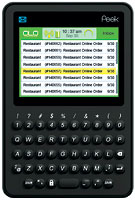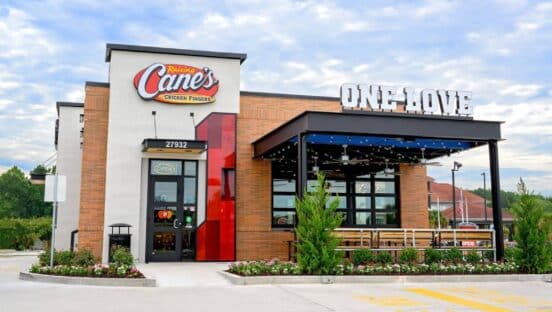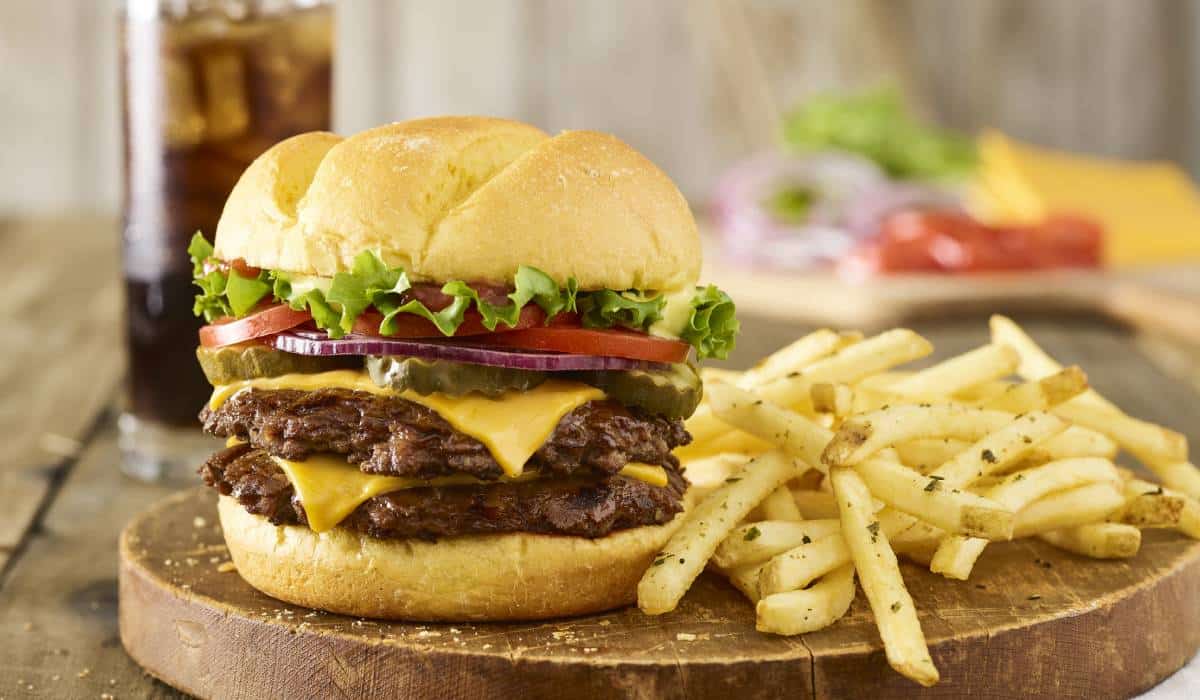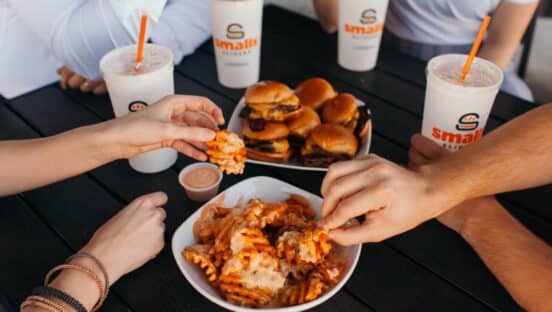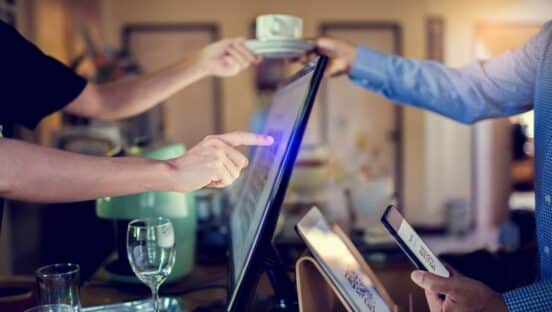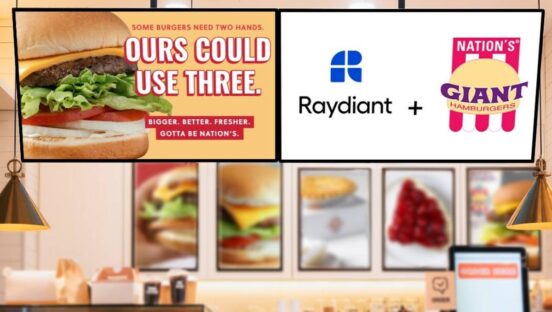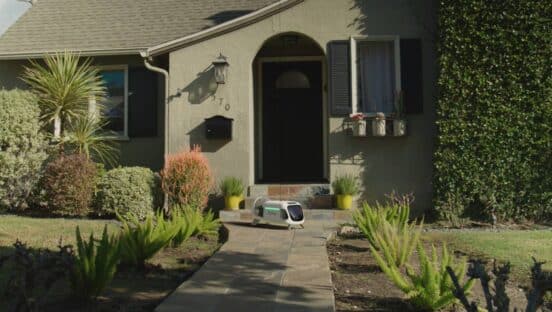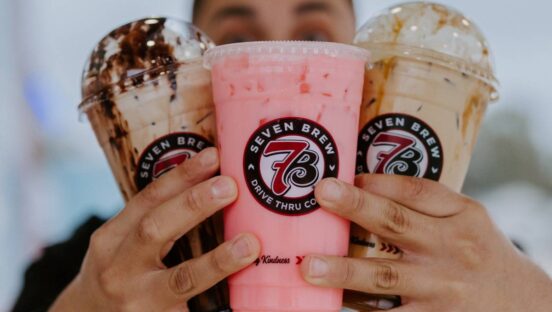Olo’s introduction to life as a public company couldn’t have gone much better. The digital platform initially targeted shares at $16–$18 before upping to $20–$22 Monday. But it ended up at $25, with Olo raising roughly $450 million at a valuation of $3.6 billion. The company closed Wednesday trading at $33.39, and hovered around $31 by mid-Thursday afternoon.
CEO Noah Glass, as always, though, had his sights on bigger notions. Olo, founded in 2005, came into the year with comparative revenue growth of 94 percent and net revenue retention of 120 percent. The brand’s gross merchandise value, as of Q4 2020, was $14.6 billion processed through its platform. Olo roughly doubled that figure in each of the last five years. Net sales in 2020 nearly doubled to $98.4 million as Olo turned a profit of $3.06 million after swinging a loss the previous two calendars.
Of course, recent success is no real stunner. COVID-19’s vice on dine-in business broke down the digital dam. Today, 64,000 restaurant locations across 400 brands run through Olo, with 1.8 million orders flowing each day.
Interestingly, in terms of potential, Olo’s profile outside restaurants remains pretty unknown. It raised less than $100 million from outside investors in more than 15 years before this week’s IPO. DoorDash, for comparison, raised $2 billion ahead of its public entry in December.
READ MORE: Surging Olo Files for $100 Million IPO
Put simply, Olo has really only begun to scratch the surface. Glass said going public could create opportunities to engage with smaller brands and even other sectors, like C-stores or grocery.
More near-term, however, COVID-19 illustrated just how much the game has changed. The digital journey is miles ahead of where it was only a year ago for restaurants. Where transactions are taking place, how data is being leveraged, what convenience means today—these are all fast-moving targets.
Glass chatted with QSR on a wide range of topics. Everything from Olo’s hopes for its IPO to technology’s next step to a potential doomsday scenario being played out today from third-party marketplaces.
I’ve always wondered with IPOs if, in the day after, you sit there and watch the stock price go up and down, or if you do everything you can in your power to tune it out. How have you kept yourself busy?
People at the Stock Exchange, I’ll say, seem like they want to draw your attention to the stock and the price while you’re here. Everybody is hoisting screens into your face and are like, ‘look can you see it?’ You’re like, ‘OK, I just want to focus on talking to people.’ So I’m in a room now with nothing showing me what the stock price is and it feels like for the first time, really Zen.
I’ve always wanted to be, if I were in the position to be a public company, a CEO who is not checking the stock price all the time. Because I really do believe in being long-term oriented and I think it’s a trap to constantly watch the stock price and obsess over it. It locks you into a short-term mentality. Hopefully, I have proven that over a 15-year-run at Olo, where it’s been a long-term journey so far. But, also at the same time, we feel like we’re just getting started.
There’s so much more to do. So many more restaurants to work with. There are so many more transactions to touch, and add value to and drive revenue from. And I say to the team all the time—I was asked what inning are we in in the restaurant industry’s digital transformation. And my response was, we haven’t even got out of the dugout. We’re so early. We have miles to go before we sleep.
I’ve always heard people say you get to the IPO and it isn’t like you’re ending a marathon, it’s like you’re at the start of the marathon. And I get it now in a way I didn’t 24 hours ago.
Your point about restaurants still being early on in this tech journey is so right. I think you could see that in 2020 with how fast and how far some had to come early on during COVID. Talk about the opportunity still on the table. What are some things you see happening sector-wide and how will an IPO help Olo help operators get there? Where is technology going in general and what’s the future look like?
I think one of the really fascinating and maybe ironic things about the past year is that it’s brought into focus for us on-premises opportunities for our platform. So things like QR codes on the table that you scan and then initiate the order, but the order is tagged to the table where you’re sitting. We’ve seen brands like Bluestone Lane Coffee here in New York deploy that and have great success. It opens up our minds. We’ve been thinking about our opportunities with all the off-premises transactions, and good thing off-premises is growing so quickly because our market is growing. But now, we really do think about all the transactions in the industry. Maybe not fine dining, and we don’t serve true SMB single-unit restaurant locations. But when we think about enterprise restaurants and how we can meet their needs, we think there’s a much larger set of capabilities and service models we can enable.

“I think outside the industry every person on the street believes restaurants are dead. And what’s left over is all delivery. And in reality, when you see delivery is still just 9 percent of the overall industry transaction count, it just gives me confidence.”
Things that we’ve seen that are interesting beyond that: curbside pickup enhancements. Everybody seems to be doing online ordering, but also curbside pickup. Socially distant delivery where the delivery is not at the door and handed to somebody but left 6 feet from the door and prepaid and all of that. Drive-thru as a hand-off venue, which I think is really interesting. Hand-off venue is a little bit of inside baseball for us. It’s like, where does the order get handed off? Is it counter, curbside? Is it the drive-thru? Drive-thru as a hand-off menu is exciting for us because we see that the [quick-service restaurant] segment, again, sort of ironically, this last year almost paused the on-demand commerce adoption of [quick-service restaurants]. Because [quick-service restaurants] had the drive-thru as the lifeline for the COVID era. But inevitably, [quick-service restaurant] drive-thru restaurants have to also go on-demand because consumers don’t want to wait behind other cars. They want to be able to order and have it ready when they get there, or have it delivered to them. Even better. That’s the new definition of convenience. I believe there will be more drive-thru pickup transactions.
And then virtual brands. We’ve been fascinated. I don’t know if you knew of MrBeast for the last three months. I had never heard of MrBeast. It was just an incredible thing we witnessed. The MrBeast Burger app was built on top of the Olo platform. The marketplace is send-to-order into MrBeast restaurants’ production kitchens, I guess you could call them. Those are all going through Olo. One hundred percent order volume is happening through Olo. Now, they’ve processed a million transactions and it was the No. 1 app in the iTunes App Store. I would say we had low expectations, but we just had no expectations. We didn’t know what it was going to do when you took somebody who had 80 million followers. But in this very ethereal way, a social media influencer that’s not grounded to a place, and then you put it into 200 places and then delivery ranges around those places—what happens? It was like a great science experiment. It worked like crazy. And I think we’ll see much more of that. It sort of comes back to another example of us being able to touch more transactions. Overall, 40 billion times a year, a consumer thinks to themselves, ‘I’m hungry. I don’t want to cook. I want to get food from a restaurant. And I want it to be an enterprise restaurant brand.’ All of those occasions are opportunities for us to touch that transaction and scale into that larger opportunity.
Yes, you would be accurate about MrBeast. I had zero idea who that was. Just kind of pulls back the curtain, though, on a broader influencer trend and how authentic marketing feels like it’s replacing traditional outlets, like mascots and maybe even celebrities. Depends on the brand, of course. But we’re clearly seeing the impact there. Feels like this was a combination of two major trends crashing head-on.
Just the idea that there are so many consumers ordering for delivery through a digital channel that you could have no restaurant footprints. No kitchens of your own. And work with Robert Earl (Earl’s Virtual Dining Concepts is behind MrBeast’s virtual brand, among others) and his portfolio of brands and their respective kitchens and stand this up overnight. It’s so radically different from if you were going to say you need to go build a 200-unit restaurant brand that covers a national audience. That took people decades before. Twenty, 30 years of brick-by-brick building new restaurant locations. And now you can turn on 200 locations and have a national audience—it’s pretty wild.
It’s sort of like the broader direct-to-consumer trend for ecommerce, in a way. Just the ability to stand something up and create a brand or launch a brand and have that national or even global following overnight. But manifested in the restaurant industry.
Right. I’m not sure you’ll ever see another brand try to broaden its reach solely on physical scale alone. We may never see another Subway again, or at least another growth model like that. The idea of targeting every Main Street corner in America. So shifting track a bit. It’s interesting to me how much has changed in a year in terms of where restaurants are in their digital journey. Feels like it’s gone from, “I need to get on whatever third-party platform I can, to capitalize on their audience and reach,” to “how can I do online ordering, or delivery, in a more profitable way that also allows me to take control of the data.” Where do you see an opportunity there?
That’s exactly what we’re seeing—is restaurants saying I need to forge that direct-to-consumer relationship. I need my customers to trust me and want to forge a direct, trusted relationship with me. Certainty that was impetrative before. But even more so now, especially for those that started their journey with digital through only indirect channels and now they’re getting customers, but maybe some of those are their own customers. It’s hard to separate the wheat from the chaff of what is truly incremental. And what is cannibalizing my core business. And then selling me my customer back at a 20–30 percent commission. Because that’s not OK.
I think that’s really, in larger part, what our platform does—help restaurants create a direct-to-consumer channel. And again, it’s kind of the Shopify versus the Amazon equivalent, but in the restaurant industry. We do work with all of the restaurant delivery marketplaces that matter to enterprise restaurant brands. The Uber Eats, DoorDash, Postmates of the world. But I think what the different parts of Olo do is No. 1, help a brand get great at their direct-to-consumer channel for takeout and for delivery without having to hire their own delivery drivers. Just by tapping into our Dispatch network. And then two, if you want to do business with the marketplaces that’s great, to the extent they are driving incremental orders but you need to be in control. You need to be in control of the menu prices. You can upcharge and remain profitable and create a natural reason for your customers to order directly because it’s cheaper to do so. And you need to be in control of your production capacity at the restaurant.
If you’re Wingstop on a Super Bowl Sunday, or the days leading up to it, you would be crazy to take orders from a marketplace charging you any commissions versus you have more direct-channel orders than you could possible handle. Having the tools to shut marketplaces off entirely or just turn them down in terms of the amount of capacity they get—that’s a key part of our Rails platform. And we’re excited for restaurants to take the next step on the digital journey within their concepts and realize the importance of these fundamental things. How do I own that consumer? Because I cannot get disintermediated by marketplaces.
The scariest thing, the thing that I always thought—the doomsday scenario—it’s starting to happen. Which is marketplaces creating food through virtual brands themselves. Knowing all about the customers in a certain area, producing the food that those customers like, and then cutting restaurants out entirely. That is the equivalent, to go back to the Amazon parallel, of Amazon basics. Searching for batteries, it’s not Duracell or Energizer that comes up first. It’s the Amazon batteries. That’s a very bad thing for Energizer and Duracell. And if we can do anything to help our restaurants en masse avoid some of the things that have happened in other industries, the hotel industry or otherwise, that is the purpose that we are meant to serve.
(Editor’s note: Olo drives revenue via subscription fees charged to restaurant chains for access to ordering software. Additionally, transaction fees for delivery orders).
I’ve talked to people about the exact doomsday scenario you explained there. It troubles a lot of operators. Where is the data going and what are they doing with it? Are they teaching themselves how to undercut restaurants in the future? Especially when you consider the struggles to find a profitable model as an aggregator. There likely will be a different end-game. But just to close here, I’ll open the floor. What are your final thoughts?
So much of the business of restaurants is still takeout and drive-thru. That is the majority of sales. And I think that is the strong foundation for restaurants to build from. They can serve their customers through digital channels for takeout and then add on for delivery as an additional capability. What we have been instructing our restaurants to do is protect that takeout advantage, where the consumer is coming to the restaurant to collect, counter, curbside, drive-thru, however they’re picking it up. Don’t let the third-party marketplaces penetrate that. That has to be your strong suit. And it’s just amazing that even through COVID-19, I think outside the industry every person on the street believes restaurants are dead. And what’s left over is all delivery. And in reality, when you see delivery is still just 9 percent of the overall industry transaction count, it just gives me confidence. Restaurants are going to be in a strong position and the industry is going to have this huge resurgence and we’re going to be celebrating good times as we come out of COVID-19. It feels like we’re a year in from when that really began and the end is in sight. I’m looking forward to that.

